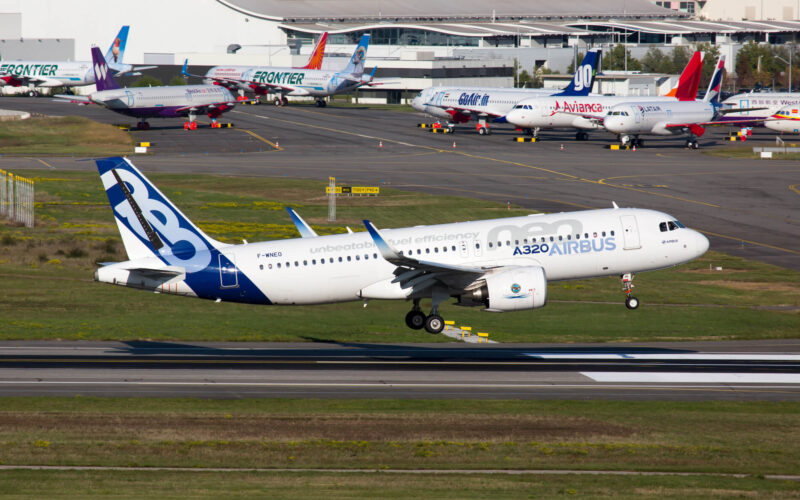The Federal Aviation Administration (FAA), following the European Union Aviation Safety Agency (EASA)‘s lead, issued an Airworthiness Directive (AD) warning of the unsafe condition that affects the whole Airbus A320neo family of aircraft and its engines.
EASA pointed out the fact that there have been numerous instances whereupon engine perturbation was noted when fuel was mixed with KATHON FP 1.5 biocide. Following an investigation, the European safety regulators determined that KATHON FP 1.5 should not be used going forward, as it could reduce the performance of the A320neo family engines. Subsequently, the usage of the biocide could result in reduced control of the aircraft.
The FAA, which issued its AD on September 21, 2020, followed EASA’s lead after it “evaluated all pertinent information and determined the unsafe condition exists and is likely to exist or develop on other products of the same type design.” The United States’ aviation regulator also determined that this directive affects flight safety, thus has not provided an opportunity for public comment on the regulation. Nevertheless, the FAA invites individuals or companies to share any relevant data, views, or opinions about the AD.
Affected are all parts of the aircraft fuel system or the engine of the aircraft, which was operated with fuel mixed with the biocide. Parts, which have been cleaned in the way that EASA’s AD requires to be done, are exempted as well as parts that have reached 30 flight cycles without the usage of the biocide.
163 aircraft, registered in the United States, are affected. The administration estimated that the total cost on all U.S. operators would be $337,410, while a single aircraft repair can setback an airline about $2,000.
Cleaning procedures
According to FAA’s estimates, up to 24 hours of work have to be done in order to amend the fault. EASA’s attached Airbus cleaning procedures outlined the process. On-ground engineers have to defuel the aircraft and drain the remaining fuel using water drain valves. Subsequently, tests to check fuel flow in “Open” and Fuel Shut Off in “Closed” positions have to be conducted.
Once again, the aircraft has to be drained of any fuel, then cleaned in order to remove any residue of the biocide in question.
Pesky biocide
The Airbus A320neo family was not the only family of aircraft that was affected by issues related to the KATHON FP 1.5 biocide.
In March 2020, Australia’s Civil Aviation Safety Authority (CASA) issued an Airworthiness Bulletin after an Australian-registered Boeing 787 suffered an “inflight incident”. CASA resorted to “encourage all operators and maintainers to suspend the use of KATHON biocide for treating micro-biological growth in aviation fuel,” for the time being. General Electric issued an All Operators Wire on May 10, 2019, where the engine maker warned that improper treatment of the fuel system with the biocide could “result in loss of thrust control or other abnormal engine operation” with the possibility that the issue could impact both engines simultaneously.
On July 15, 2020, the FAA issued an AD that covered the Boeing 737 MAX family. The administration’s decision followed a report that the chemical in question could “lead to significant engine anomalies,” read the directive. The fuel systems in the GEnx engines and the CFM LEAP-1B are similar, stated the agency, thus 737 MAX was also susceptible to a “multi-engine loss.” According to the FAA’s estimates at that time, 75 U.S.-registered aircraft were affected by the AD, which added up to a total cost of $155,250, or about $2,000 per one Boeing 737 MAX.
On March 10, 2020, the manufacturer of the biocide, which was supposed to prevent microbiological contamination in the fuel tanks, asked all users of KATHON FP 1.5 to halt usage of the biocide. Ten days later, EASA issued a Safety Information Bulletin (SIB) to “notify affected stakeholders of the recent occurrences related to the use” of the chemical.
Furthermore, three incidents were highlighted by EASA.
In February 2020, for example, a Titan Airways’ Airbus A321 left-hand engine suffered surges, while the right-hand engine stalled. The United Kingdom’s Civil Aviation Authority (CAA) concluded that an engineer in poured 37 times the amount of permitted dosage of KATHON, resulting in the contamination.
While the second incident was also the result of misapplication, the third showcased no evidence that the usage of the biocide was something out of the norm. Nevertheless, EASA concluded that an Airworthiness Directive (AD) was warranted.

